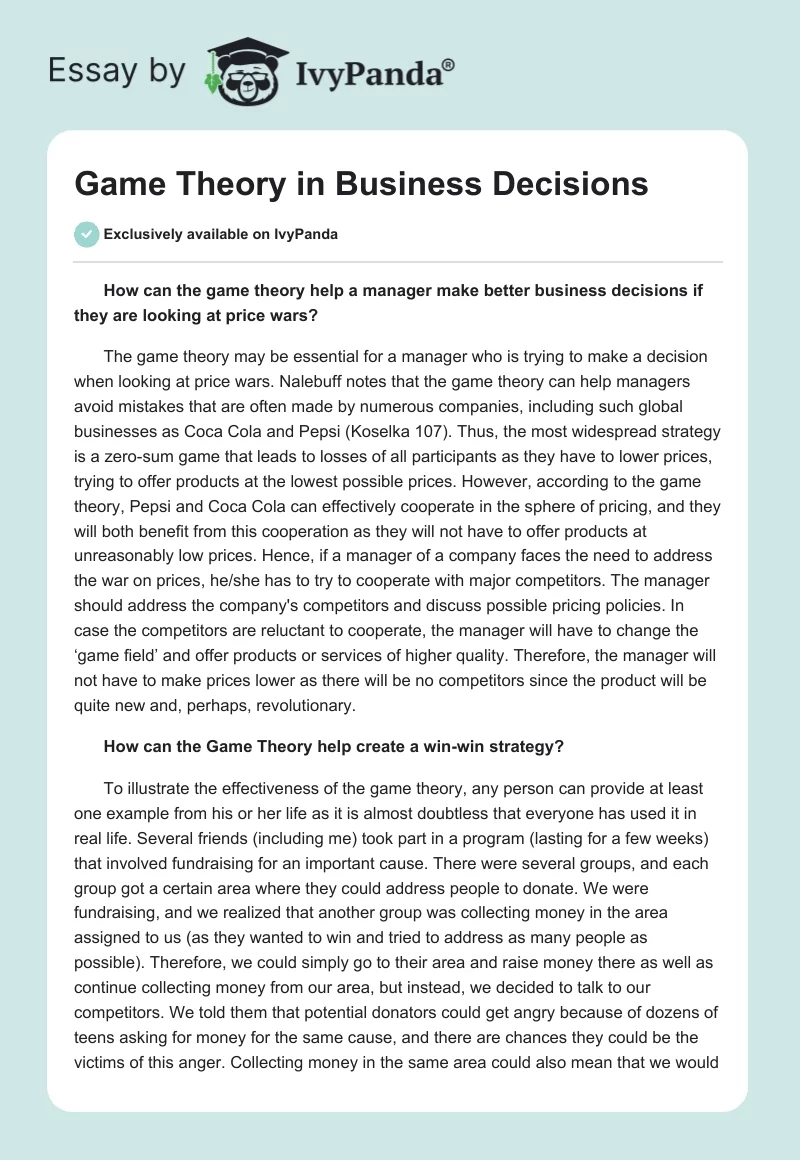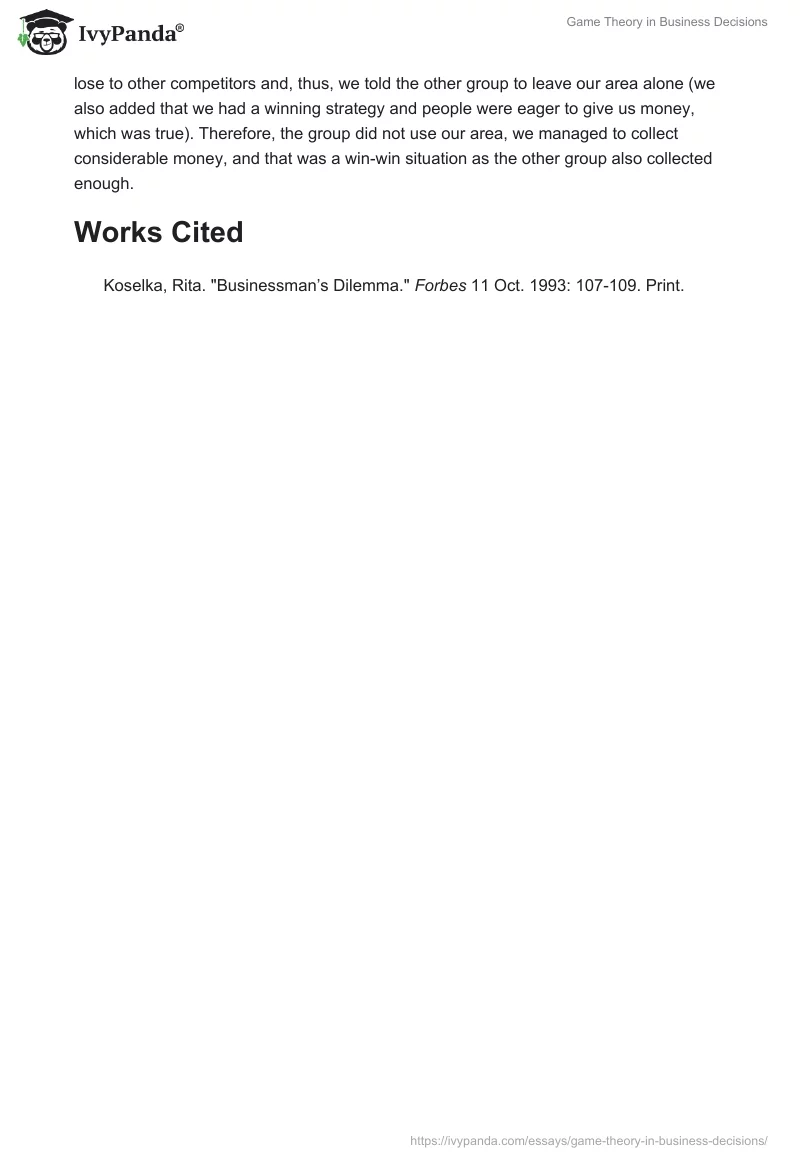How can the game theory help a manager make better business decisions if they are looking at price wars?
The game theory may be essential for a manager who is trying to make a decision when looking at price wars. Nalebuff notes that the game theory can help managers avoid mistakes that are often made by numerous companies, including such global businesses as Coca Cola and Pepsi (Koselka 107). Thus, the most widespread strategy is a zero-sum game that leads to losses of all participants as they have to lower prices, trying to offer products at the lowest possible prices. However, according to the game theory, Pepsi and Coca Cola can effectively cooperate in the sphere of pricing, and they will both benefit from this cooperation as they will not have to offer products at unreasonably low prices. Hence, if a manager of a company faces the need to address the war on prices, he/she has to try to cooperate with major competitors. The manager should address the company’s competitors and discuss possible pricing policies. In case the competitors are reluctant to cooperate, the manager will have to change the ‘game field’ and offer products or services of higher quality. Therefore, the manager will not have to make prices lower as there will be no competitors since the product will be quite new and, perhaps, revolutionary.
How can the Game Theory help create a win-win strategy?
To illustrate the effectiveness of the game theory, any person can provide at least one example from his or her life as it is almost doubtless that everyone has used it in real life. Several friends (including me) took part in a program (lasting for a few weeks) that involved fundraising for an important cause. There were several groups, and each group got a certain area where they could address people to donate. We were fundraising, and we realized that another group was collecting money in the area assigned to us (as they wanted to win and tried to address as many people as possible). Therefore, we could simply go to their area and raise money there as well as continue collecting money from our area, but instead, we decided to talk to our competitors. We told them that potential donators could get angry because of dozens of teens asking for money for the same cause, and there are chances they could be the victims of this anger. Collecting money in the same area could also mean that we would lose to other competitors and, thus, we told the other group to leave our area alone (we also added that we had a winning strategy and people were eager to give us money, which was true). Therefore, the group did not use our area, we managed to collect considerable money, and that was a win-win situation as the other group also collected enough.
Works Cited
Koselka, Rita. “Businessman’s Dilemma.” Forbes 11 Oct. 1993: 107-109. Print.


